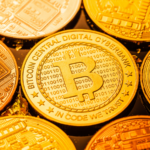Such artificial networks are no different from the cross-linked capillary branches that run through the infrastructure of our body’s circulatory system, or from the dense network of neuronal connections that populate our brain. Not surprisingly, artificial networks, from global supply chains to the financial transactional systems that run modern economies, are all conceptually similar to the networks found in nature. There seems to be an economy of resources in their branching motif.
And that’s probably why networks are an ideal paradigm for efficiently designing complex data processing systems.
Centralization vs. Decentralization
One way to categorize networks is to classify them topologically as centralized or decentralized. A centralized system is hierarchical in nature, while an ideal decentralized network is essentially autonomous. For example, in the first case, power is inherently unequal in distribution because a central “authority” has primary control over other relatively “low-level” components of the system. On the other hand, decentralized systems inherently lack such centrally concentrated hierarchies of power and are instead based on equally “distributed” control among all components of the system. Decentralized systems are therefore expected to allow balance, less discrimination and encourage the possibility of new emerging behaviors. These key features distinguish decentralized networks from most traditional artificial institutions, which are often known to generate oppressive centralized hierarchies. A commonly expressed lament about such centralized entities is: “the system is rigged.”
Decentralized Finance (DeFi)
It is in the context of these basic principles that the concept of decentralized finance (DeFi) becomes relevant to our discussion of cryptocurrency and the computationally driven economies of the 21st century. In the simplest sense, DeFi represents a financial system built on existing blockchain technologies such as Bitcoin or Ethereum. The goal of DeFi systems is to harness the potential of decentralized networks in order to design applications that facilitate financial transactions and processes without centralized controls or intermediaries to govern them. DeFi systems are then positioned to provide users with complete control over their finances without having to rely too much on centralized authorities such as banks and government.
Any individual using the DeFi network can verify every transaction that occurs on the blockchain. Some DeFi applications also provide people with access to powerful wealth management and analysis tools that can surpass the experience of using traditional centralized financial systems. Another benefit that is often cited in favor of DeFi is their ability to tokenize assets, which could include anything from real estate to artwork and intellectual property. The DeFi ecosystem is therefore often promoted for its ability to overcome the limitations of traditional systems in terms of speed, freedom and accessibility. It’s no secret that proponents of cryptocurrency view these traditional systems as insular and outdated. In addition, DeFi’s emphasis on transparency and permissionless accessibility to its assets is consistent with the blockchain’s philosophy: don’t trust. Check.
It’s no surprise then that DeFi is one of the fastest growing aspects of cryptocurrency today. The total value of assets locked in DeFi is estimated at around $4 billion in mid-2020, attracting a steadily increasing number of investors and entrepreneurs. In addition to financial control and agility, DeFi also promises a favorable framework for scalability when it comes to the future creation and implementation of innovative new technologies on the blockchain. It is important to note that these DeFi values are not new. In fact, decentralization has always been espoused as the cornerstone of cryptocurrency by its evangelists and blockchain advocates, and it would be considered rather short-sighted to limit its meaning to only one specific type of currency or digital application.
But every coin has two sides
DeFi is still a nascent concept and has a small but determined group of supporters. But regardless of all the exciting pros in its favor, it would be hypocritical to completely overlook the limitations and cons of this powerful concept. To begin with, decentralization is not the most effective model in all cases. Sometimes centralized systems are preferred for implementing localized control mechanisms for better efficiency and maintenance. In addition, blockchain-based decentralized networks store information in an encoded form that allows no one to manipulate it, thus eliminating the need for a custodial control authority. However, this same aspect has also been cited as a technical limitation of DeFi because such a system architecture makes it significantly difficult to write new code or fix bugs in existing code. Critics have pointed out that unless these limitations are overcome, it will be difficult for DeFi to ensure seamless security. Such criticisms are not unwarranted given that security flaws and vulnerabilities have already become apparent with the most well-known DeFi systems developed by Ethereum.
Providing an efficient user experience, standardized security features, and consistent interoperability could be some of the biggest hurdles for DeFi at this stage. However, these are exactly the kinds of problems that drive innovation and force us to consider solutions thinking outside the box. A good way to look at the DeFi landscape going forward is to consider the history of the Internet. As a technology, the global web has also undergone enormous transformations and stages of evolution as the focus has shifted from issues of security and reliability to speed and efficiency. Even today, the internet is in a constant state of user-empowered changes that drive towards a better experience. When we look back at biological systems, the principle of evolution through adaptation is also driven by the pressures of natural selection. With this in mind, perhaps we should also allow some optimism when it comes to adapting to the obstacles and challenges of new concepts such as DeFi, particularly if there are benefits to be acquired in the long term.


